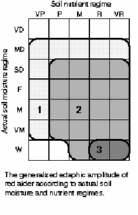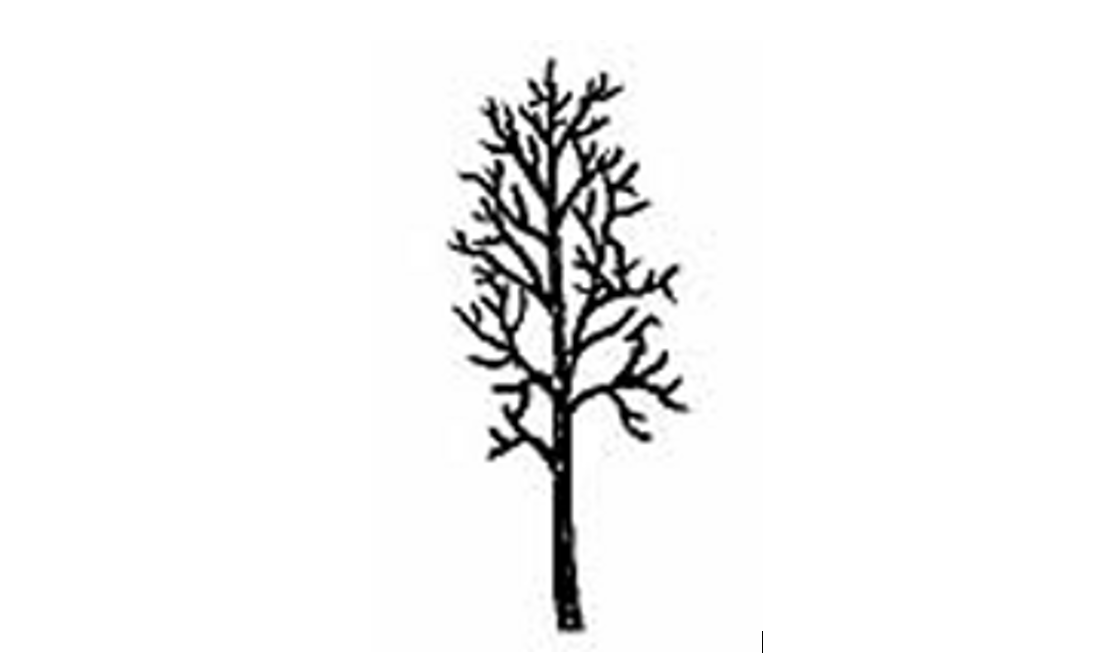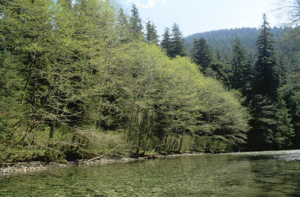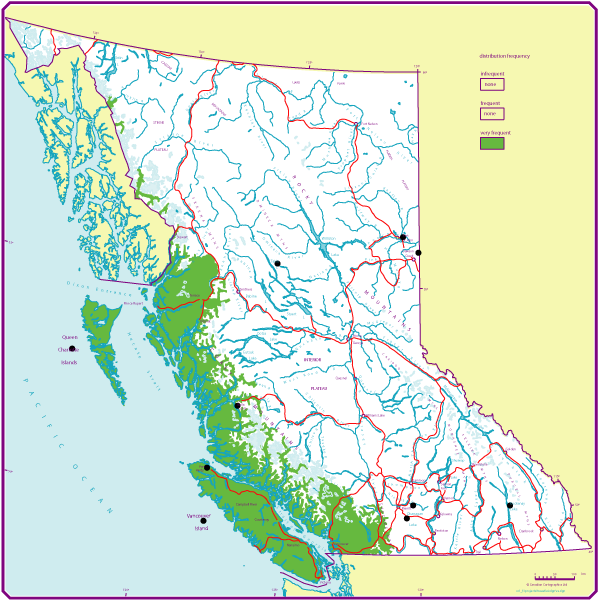Red alder
On this page
- Geographic range and ecological amplitudes
- Tolerances and damaging agents
- Silvical characteristics
- Genetics and notes
Geographic range and ecological amplitudes
Description
Red alder is a medium-sized (<40m tall), deciduous broad-leaved tree at maturity with a narrow rounded crown, straight, slightly tapered stem, and smooth, light gray bark. Red alder wood is moderately dense, and uniformly textured. It is used for firewood and specialty products.
Geographic range
Geographic element:
Western North American/Pacific
Distribution in Western North America:
north, central, and south in the Pacific region
Ecological amplitudes
Climatic amplitude:
(cool temperate) - cool mesothermal
Orographic amplitude:
submontane - montane
Occurrence in biogeoclimatic zones:
CDF, CWH
Edaphic amplitude

Range of soil moisture regimes:
(moderately dry) - slightly dry - fresh - moist - very moist - wet
Range of soil nutrient regimes:
(very poor) - poor - medium - rich - very rich
Red alder has high requirements for calcium, magnesium, phosphorus and potassium; however, after fire, it can become established, like any other alder species, in nitrogen-poor soils because of a symbiotic relationship with a nitrogen-fixing actinomycete. Thus, the presence of red alder will result in increases in both nitrogen content and its availability in the soil, along with increases of organic matter and soil acidity and decreases in bulk density. Nitrogen fixed in the nodules is added to the soil in four ways: direct excretion from living roots or nodules, decomposition of dead roots or nodules, leaching from foliage, and decomposition of nitrogen-rich litter. Maximum annual fixation rates of 320kg/ha have been reported.
Tolerances and damaging agents
Root system characteristics
Red alder develops an extensive, fibrous root system, with root nodules that fix atmospheric nitrogen. The nodules are a symbiotic association between the tree and an actinomycete (Frankia ssp.). Nodulation occurs soon after seed germination. Roots are associated with ecto- and endo-mycorrhizae.
| Tolerance to | Tolerance class | Comments |
|---|---|---|
| low light | L | a very intolerant, exposure-requiring species |
| frost | L | not a major concern in mesothermal climates |
| heat | L | infrequent on insolated sites |
| water deficit | L | sheds leaves during acute summer water deficits |
| water surplus | H | tolerates wet sites, flooding, and sites with a strongly fluctuating water table well |
| nutrient (mainly N) deficiency | H | infrequent in acid, very poor soils |
| Damaging agent | Resistance class | Comments |
|---|---|---|
| snow | L | ice storm damage quite frequent |
| wind | M | high winds will break the boles rather than uproot trees |
| Risk class | ||
|---|---|---|
| fire | L | fire risk in red alder stands is low |
| insect | L | not a major concern |
| fungi | L | not a major concern |
Associated tree species and successional role
In British Columbia, red alder grows in even-aged, pure stands and, in later successional stages, with shade-tolerant conifers. It is a pioneer species (primary succession) on floodplains and present in early and intermediate stages of secondary succession on upland sites.
| Associated tree species |
Occurance class | Major area of occurance |
|---|---|---|
| western hemlock | M | CWH |
| sitka spruce | M | mainly in hypermaritime CWH |
| black cottonwood | M | floodplains in southern coastal B.C |
| western redcedar | M | CDF and CWH |
| grand fir | L | southern coastal B.C |
| bigleaf maple | L | southern coastal B.C |
Genetics and notes
Genetics
Population differences in morphological and physiological characters have been demonstrated in trials (Dang et al. 1994), but no races and natural hybrids have been described.
Notes
Red alder produces in a short time (about 30 years or less) high yields of wood. Considering its productivity, easy regeneration (prolific annual seed crops), and low risk of being affected by damaging agents, it is a suitable species for intensive management on some coastal sites, especially those where the establishment of conifers is fraught with difficulties (for example, on riparian sites).
It is also suitable as a nurse crop species on nitrogen-poor sites (although the more shrubby and shade-tolerant Sitka alder may be more appropriate) and severely disturbed sites (landslides, landings, etc.). It has been suggested as a nurse species for Sitka spruce, as its shade and visual diversion will deter spruce weevil. More detailed silvics information is given by:
Harrington, C.A. 1990. Alnus rubra. Pp. 117-123 in R.M. Burns and B.H. Honkala (technical coordinators) Silvics of North America, Vol. 2. Agri. Handbook 654, USDA For. Serv., Washington, D.C.
Peterson, E.B., G.R. Ahren, and N.M. Peterson. 1996. Red alder manager''''s handbook for British Columbia. FRDA Report 240, B.C. Min. For., Victoria, B.C. 124 pp.

This is the general shape and outline of the red alder.

Red alder inhabits low and middle benches of alluvial floodplains and forms a temporary or permanent component of the communities along coastal streams as at this Carmanah River site.

